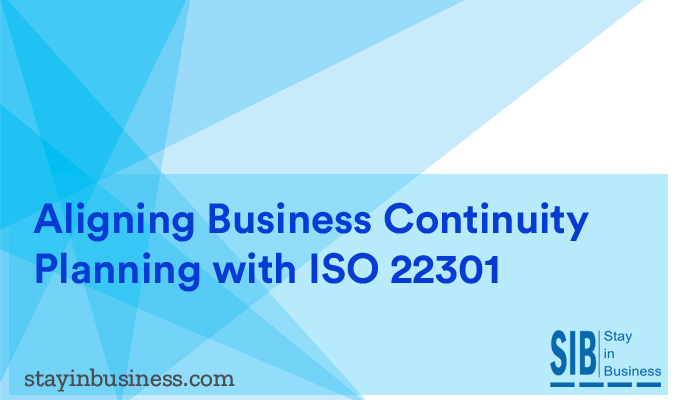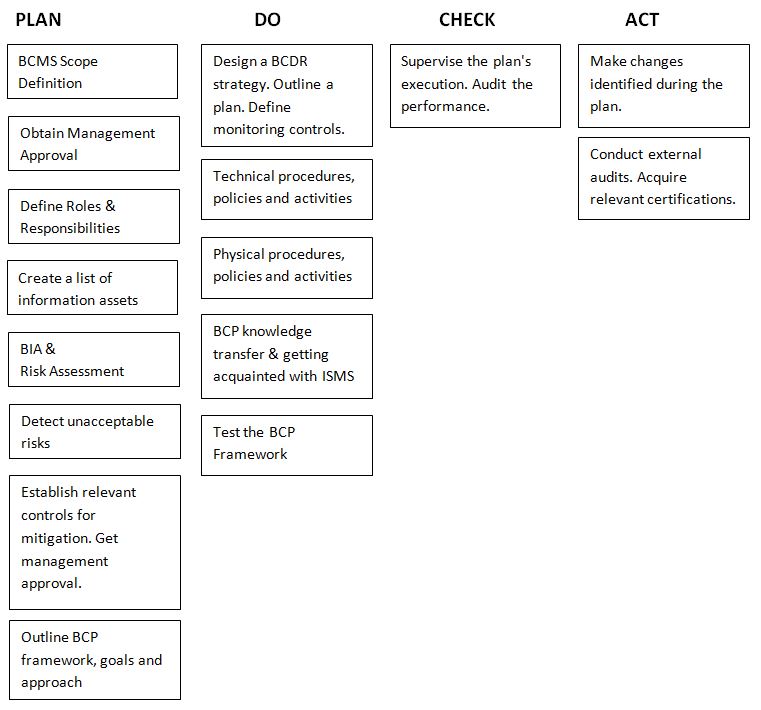
Stay in business lets your organization develop a highly resilient Business Continuity and Disaster Recovery capability that is in sync with the ISO 22301 standard. Since this is an internationally accepted methodology, interest groups such as stakeholders, investors, customers and the public tend to have a favorable opinion of any organization that has an ISO 22301 compliant business model.
ISO 22301 allows you considerable flexibility as it combines salient features of other business continuity standards such as ISO 22399, ISO 24762, ISO 27031, NIST 800-34 and NFPA 1600.
The ISO 22301 is primarily focused on establishing business continuity objectives and evaluating performance based on a set of predefined metrics. Such an approach means that the top management gets directly involved in the business continuity process and can be held responsible is something goes wrong. Outlining the resource needs for various business continuity tasks is another focus area of the ISO 22301.
BCM Execution
The success or failure of any business continuity capability hinges on a highly efficient framework for management. Stay in business lets you outline a contextually relevant business continuity policy. Key personnel with the relevant skills and expertise can be identified.
- Responsibilities can be delegated
- Processes can be defined
- Operations can be further streamlined through
- Planning,
- Implementation,
- Assessment,
- Reviews and
- A culture of continuous improvement
Stay in business can also assist you in developing a detailed documentation strategy so that legal and auditory liabilities are avoided.
All workflows are designed around the Plan-Do-Check-Act methodology of the ISO 22301 standard.
Plan – Reach a consensus on the scope of the BCDR solution. Define roles and delegate responsibilities. Analyze the impact to people, processes, infrastructure and technology within the scope of the Business Continuity and Disaster Recovery (BCDR) solution
Do – Execute the plan. Use controls to manage processes and procedures within the system.
Check – Evaluate the plan’s relevance based on a set of predefined qualitative and quantitative metrics.
Act – Make the necessary changes based on the gaps identified in the system.
Strategic Approach for Implementing BCP 22301

See for yourself how the application works
Witness our cloud based platform’s security capabilities in action
Play around with the software and explore its features
Compare and choose a solution that’s relevant to your organization
Consult our experts and decide on a pricing mechanism
Disasters
[carousel id=’1780′ items=’4′ items_desktop=’3′ margin_right=’5′ navigation=’false’] [item img_link=”https://www.stayinbusiness.com/wp-content/uploads/2016/02/Chemical-Spills-Discharges.jpg” href=”https://www.stayinbusiness.com/resource/disaster-recovery/chemical-spills-and-discharges/”][item img_link=”https://www.stayinbusiness.com/wp-content/uploads/2016/02/Riots-Public-Disturbances.jpg” href=”https://www.stayinbusiness.com/resource/disaster-recovery/riots-and-public-disturbances/”][item img_link=”https://www.stayinbusiness.com/wp-content/uploads/2016/02/Terrorism.jpg” href=”https://www.stayinbusiness.com/resource/disaster-recovery/terrorism/”] [item img_link=”https://www.stayinbusiness.com/wp-content/uploads/2016/02/worst-product-recall.jpg” href=”https://www.stayinbusiness.com/resource/disaster-recovery/product-recall/”] [/carousel]
